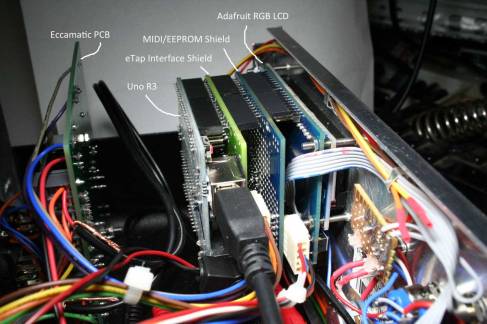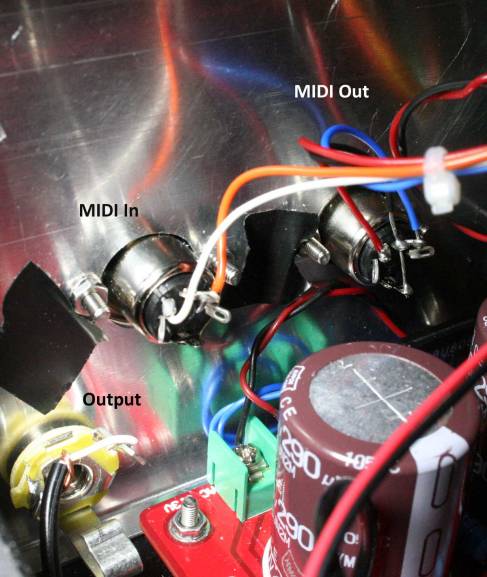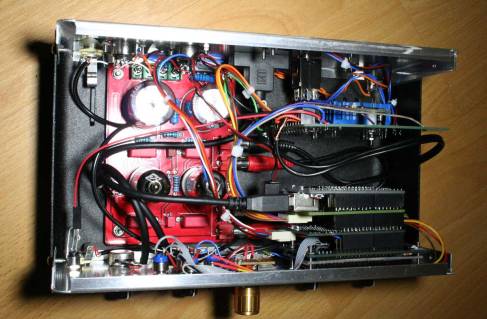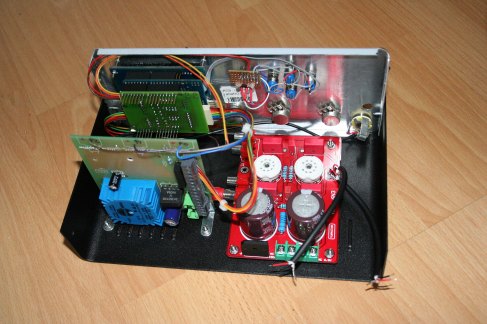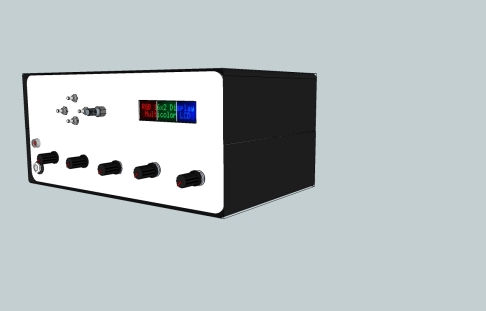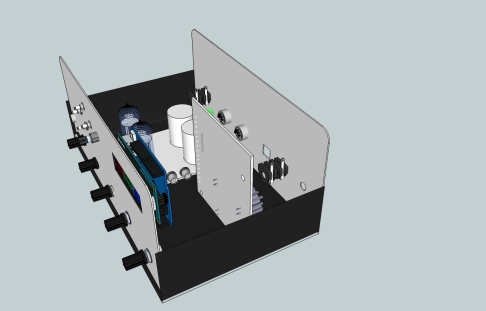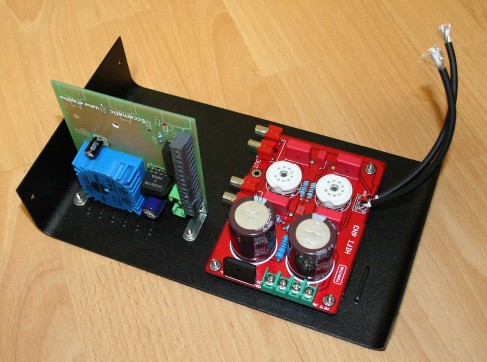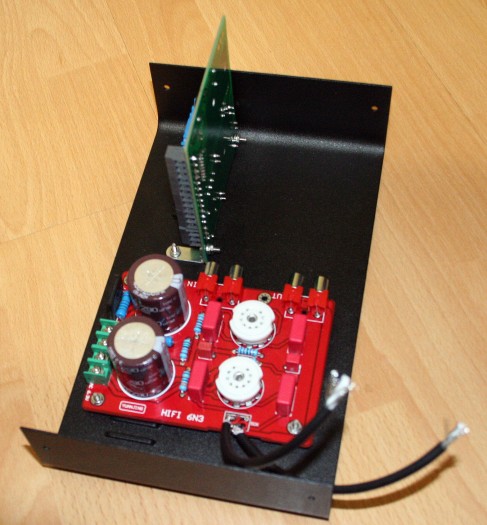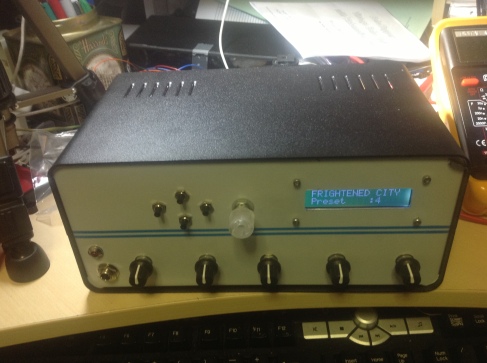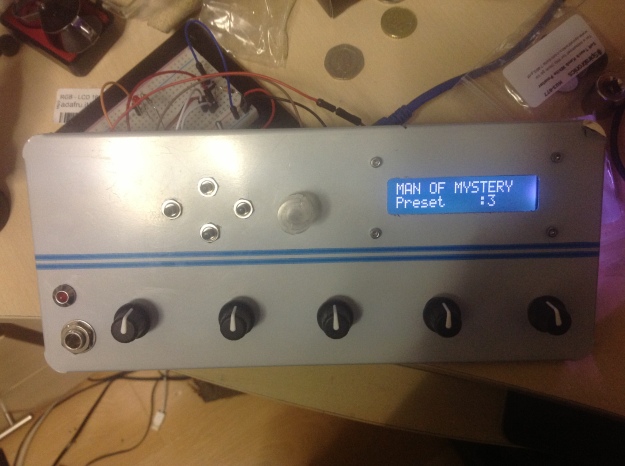I’ve just completed what I’m calling ‘Stage 3’ of the modifications to the Yuan Jing 6N3 valve (tube) pre-amplifier that Steve Mitchell and I have been working on. As you probably know, Eric Thacker (aka Ecca) originally came up with the idea to use a fairly low-cost ready-made Chinese valve preamp that is available from various sellers on eBay, as a front end to the eTap2HW module programmed by Piet Verbruggen to emulate the vintage echo machines used by Hank Marvin, the lead guitarist of the British group The Shadows.
Based on the ‘Matisse’ circuit, it’s design is intended as a HiFi preamp and as such the original sound was not ideal when it came to be used as a preamp ahead of the SKRM-eTap2 echo module. Working with a simulation of the circuit, Steve came up with a number of changes to make it more guitar and eTap2 friendly. I then tested these in the real world and gave feedback to Steve which enabled him to make further tweaks until we were happy with the result; though no doubt he’s busy thinking up a few more for me to try even as I’m typing these words 🙂
I will shortly be providing the details of how to carry out these modifications but in the meantime I feel the time is right to publish a couple of test recordings that I have made using the ‘Stage 3 Modified’ Valve Echotapper so others can judge the results for themselves.
In both these recordings (which are made for the sole purpose of education and research) I have used the original recordings by The Shadows but have been able to turn Hank’s lead guitar parts on and off as and when I wish. I recorded myself playing the lead part to this ‘backing track’ and rendered the finished tracks you will hear below and alternated the lead part between Hank and myself. (There is a short section just after the start of “Theme for Young Lovers” where we both play together).
No additional effects were added to Theme for Young Lovers. Blue Star had some EQ added to the recorded track before rendering it to the final mp3.




















